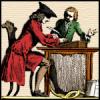The quill pen
-
Forum Statistics
355k
Total Topics4.6m
Total Posts -
Member Statistics
128,113
Total Members18,857
Most OnlineNewest Member
julets
Joined -
Images
-
Albums
-
Extra Fine Nib Ink Reviews (19 of n)
- By LizEF,
- 0
- 77
- 77
-
USG 7
- By USG,
- 0
- 0
- 97
-
GlenV
- By GlenV,
- 0
- 2
- 77
-
Bad Gateway
- By A Smug Dill,
- 0
- 6
-
namrehsnoom-16
- By namrehsnoom,
- 0
- 0
- 100
-


















.thumb.jpg.f07fa8de82f3c2bce9737ae64fbca314.jpg)



.thumb.jpg.331e554113c33fb39d5bf3233878978a.jpg)





Recommended Posts
Create an account or sign in to comment
You need to be a member in order to leave a comment
Create an account
Sign up for a new account in our community. It's easy!
Register a new accountSign in
Already have an account? Sign in here.
Sign In Now